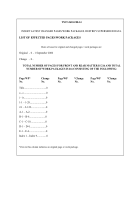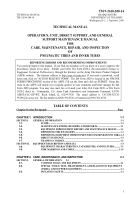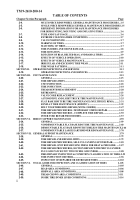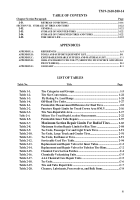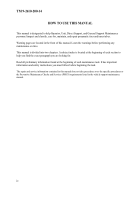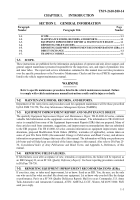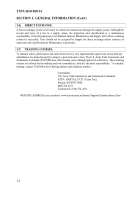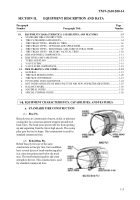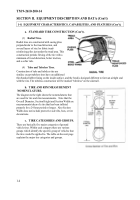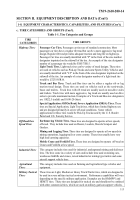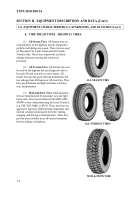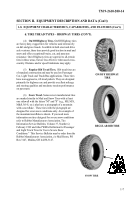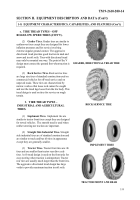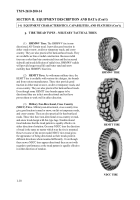TM-9-2610-200-14 - Page 17 of 207
TM 9-2610-200-14
1-4
SECTION II.
EQUIPMENT DESCRIPTION AND DATA (Con't)
1-8.
EQUIPMENT CHARACTERISTICS, CAPABILITIES, AND FEATURES (Con't).
a.
STANDARD TIRE CONSTRUCTION (Con't).
(3)
Radial Tires.
Radial tires are constructed with casing plies
perpendicular to the tread direction, and
several layers of steel or fabric tread-
reinforcing plies just under the tread area. This
construction permits flexing of the tire with a
minimum of tread distortion, better traction,
and a softer ride.
(4)
Tube and Tubeless Tires.
Construction of tube and tubeless tire are
similar, except tubeless tires have an additional
thin bonded rubber lining on the inside surface, and the bead is designed different to form an airtight seal
with the rim. The tubeless construction will be marked "tubeless" on the sidewall.
b.
TIRE AND RIM MEASUREMENT
NOMENCLATURE.
The diagram to the right shows the nomenclatures that
are used for tire and rim measurements.
Note that the
Overall Diameter, Section Height and Section Width are
measurements taken of a tire that has been inflated
properly for a 24 hour period or longer.
Also Section
Width does not include protective side ribs, bars, or tire
decorations.
c.
TIRE CATEGORIES AND GROUPS.
There are basically five major categories of ground
vehicle tires. Within each category there are various
groups which identify the specific group of vehicles that
the tires would be applied to. The table on the next page
explains the major tire categories and groups.
Back to Top

